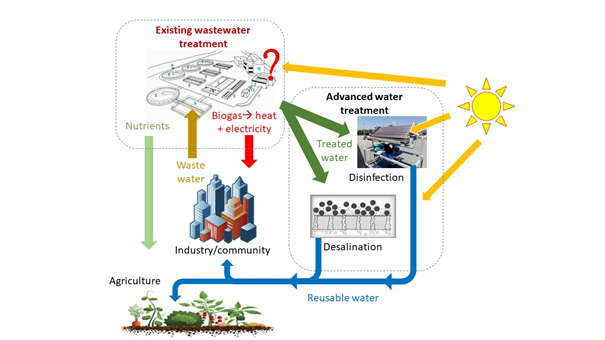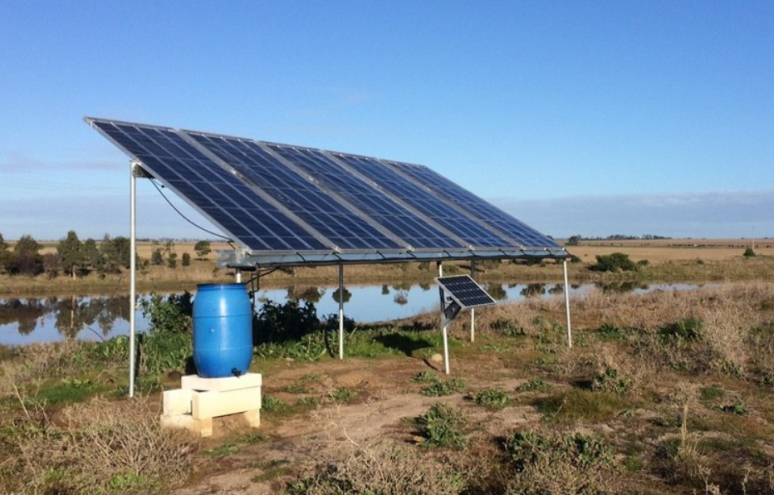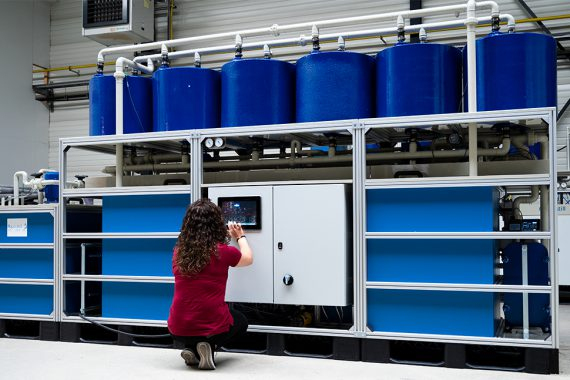Posted: March 18, 2022

Figure: IEA Task 62
https://investors.heliogen.com/events-and-presentations/default.aspx
Operating a water treatment plant is a complex task in itself. If you start thinking about using solar energy to drive certain separation or disinfection processes, the task becomes even more challenging (as the graphic above shows). Water treatment plant operators who want to harness more solar energy would benefit from guidelines to support them in selecting the most suitable water treatment concept in combination with solar thermal and disinfection technology. Developing such a decision-making tool is the aim of Mikel Duke from Victoria University in Australia within the research group IEA SHC Task 62 - Solar Energy in Industrial Water and Wastewater Management.
“We are working on the task of developing a decision-making tool that can help industries treat their wastewater using the abundant solar power,” said Duke. To do this, his Task 62 research team including intern Dr Lavern Nyamutswa and technical experts Dr Cagil Ozansoy (Victoria University) and Dr Wei Yang (University of Melbourne) carried out a literature and market survey in 2019. The aim was to identify established and emerging technologies that interlink solar energy and water treatment.
“To find suitable technologies, we sent out a survey form to numerous contacts to help us identify solar energy driven water purification and separation systems either at the R&D stage or commercial, so we can first understand the practical potential,” explained Duke.
The research team asked the cooperating technology providers to fill in a user need and technology profile. Twelve completed surveys were received, providing information through the completed profile. Technologies were also found by searching online and through information obtained in Task 62 internal workshops. A key feature required for technologies to be considered was the connection to solar energy, either shown directly by the technology or mentioned by the respondent. Each technology was identified in terms of the developer, operating features, performance characteristics, benefits and limitations in a report that will be published on the Task 62 subpage: https://task62.iea-shc.org/publications. The following table shows a summary of the considered concepts.
|
Technology category
|
Provider type
|
Number of providers
|
Technology readiness
|
Headquarters of technology supplier / developer
|
|
Direct solar oxidation reactor
|
University or research institute
|
6
|
TRL 4-6
TRL 9
|
Chile, Italy, Spain
|
|
Solar distillation
|
Company
|
1
|
TRL 9
|
Australia
|
|
Membrane distillation
|
Companies
|
3
|
TRL 7, TRL 9
|
Netherlands, Germany
|
|
Membrane distillation hybrid photo oxidation
|
Research institute
|
1
|
TRL 4
|
Australia
|
|
Direct solar disinfection reactor
|
Research institute
|
1
|
TRL 7
|
Spain
|
|
Solar oxidation membrane cleaning
|
University
|
1
|
TRL 3
|
Australia
|
|
Wet Air Oxidation + solar thermal collectors
|
Research institute
|
1
|
TRL 4
|
Spain
|
Featured solar energy driven water treatment processes identified via a survey among technology suppliers, expert meetings and internet research Source: SHC Task 62
The technologies identified by the SHC Task 62 research group range between technology readiness level (TRL) 3 (lab testing) to TRL 9 which means market-ready and commercial systems are available. In the following, the three technologies with TRL 8 and 9 are described.

Solar thermal collector for desalination
Photo: F Cubed
The Australian company F Cubed offers solar desalination units for the purification of seawater, groundwater or contaminated water. Depending on the water source, the system provides pure clean drinking water and/or UV-treated hot water.
The so-called Carocell panels receive contaminated water by gravity or pump into a feeder pipe at the top of the unit. It is a flow-through system in the sense that the input water slowly runs down the solar evaporator, being evenly dispersed. Solar energy heats the water, which vaporises and then condenses on the inside of the composite plastic cover. This phase change avoids any transfer of contaminants into the pure water. Droplets of naturally purified/desalinated water run down into a pure water outlet at the bottom of the unit.
Direct solar oxidation reactor in Italy
Vacuum tubes with compound parabolic concentrators (CPC) are at the heart of a reactor pilot plant installed at the urban wastewater treatment plant of the Italian municipality Nocera Superiore. The process is called solar photo-Fenton and involves the irradiation of water containing iron (as a catalyst) and H2O2 (hydrogen peroxide) to promote the generation of highly powerful radicals that help to deactivate organic pollutants and microorganisms. The research group of Plataforma Solar de Almeria in Spain validated the concept as TRL 9 for the pre-treatment of pesticide-contaminated water and a full-scale plant exists in the province of Almeria, Spain.
The CPC reactor developed by the University of Salerno consists of two 59-litre filled modules, each equipped with 20 acrylic glass tubes (150 x 5 cm). Both modules are mounted on a mobile and inclinable platform, through which the reactor can be orientated toward the sun. Two tanks (60 L capacity each) housed in the lower part of the pilot system, are connected to a pump.

Membrane distillation units (photo: Aquastill)
Sustainable desalination units based on membrane distillation are offered by the Dutch company Aquastill. Here, hydrophobic membranes act as a barrier to polluted input streams, allowing only clean water vapour to pass. The process is driven by a vapour pressure difference, which is the result of a temperature difference. To create this temperature difference one side of the membrane is heated up by either solar or waste energy, the other side is cooled. The photo above shows a medium-size Aquastill unit capable of producing 3 m3 of clean water per day. Since 2012 the company has installed more than 30 pilot plants around the world at enterprises and research institutions.
Organisations mentioned in this news article: